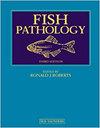以螺旋体基因为靶点的聚合酶链反应研究阿古雅牡蛎病的流行病学
IF 0.2
4区 农林科学
Q4 FISHERIES
引用次数: 3
摘要
在之前的一项研究中,螺旋体的一个成员被认为是引起Akoya牡蛎病(AOD)的原因,而Candidatus Maribrachyspira akoyae被认为是可能的病原体。为了开展AOD的流行病学研究,利用BLAST搜索发现的与螺旋藻基因高度同源的散弹枪宏基因组序列设计的引物,建立了聚合酶链反应(PCR)检测方法。用6组引物对来自5个aod流行区(n = 88)的珍珠牡蛎进行PCR检测,产生了特异性靶扩增子(n = 63 ~ 67),而在3个无aod区(n = 36)的珍珠牡蛎中没有产生特异性靶扩增子。6组引物PCR结果显示,颜色指数a值大于3.0的个体(n = 17)均呈阳性。a值与PCR结果呈正相关。上述结果表明,先前将螺旋体确定为AOD的病原是合理的。扩增产物测序证实,扩增产物中只有1个核苷酸被替换,提示AOD致病因子具有有限的遗传多样性。本文章由计算机程序翻译,如有差异,请以英文原文为准。
An Epidemiological Study of Akoya Oyster Disease Using Polymerase Chain Reaction Targeting Spirochaetes Genes
In a previous study, a member of Spirochaeta was presumed to cause Akoya oyster disease (AOD), and Candidatus Maribrachyspira akoyae was proposed as the putative causative agent. With the aim of performing an epidemiological study of AOD, polymerase chain reaction (PCR) assays were developed using the primers designed from shotgun metagenomic sequences identified as having high homology to Spirochaetes genes by a BLAST search. PCR assays with six primer sets produced specific target amplicons (n = 63–67) in pearl oysters collected from five AOD-endemic areas (n = 88), but did not in pearl oysters (n = 36) collected from three AOD-free areas. All individuals (n = 17) with the color index a-value above 3.0, which is an index of AOD development, were positive for all 6 primer sets in PCR. There was a positive correlation between the a-value and the results of PCR. These results show that the previous identification of Spirochaeta as an etiological agent of AOD is reasonable. Sequencing of amplification products confirmed only one nucleotide substitution in the PCR products, suggesting that the pathogenic causative agent of AOD has limited genetic diversity.
求助全文
通过发布文献求助,成功后即可免费获取论文全文。
去求助
来源期刊

Fish Pathology
农林科学-兽医学
CiteScore
1.40
自引率
16.70%
发文量
13
审稿时长
6 months
期刊介绍:
Information not localized
 求助内容:
求助内容: 应助结果提醒方式:
应助结果提醒方式:


